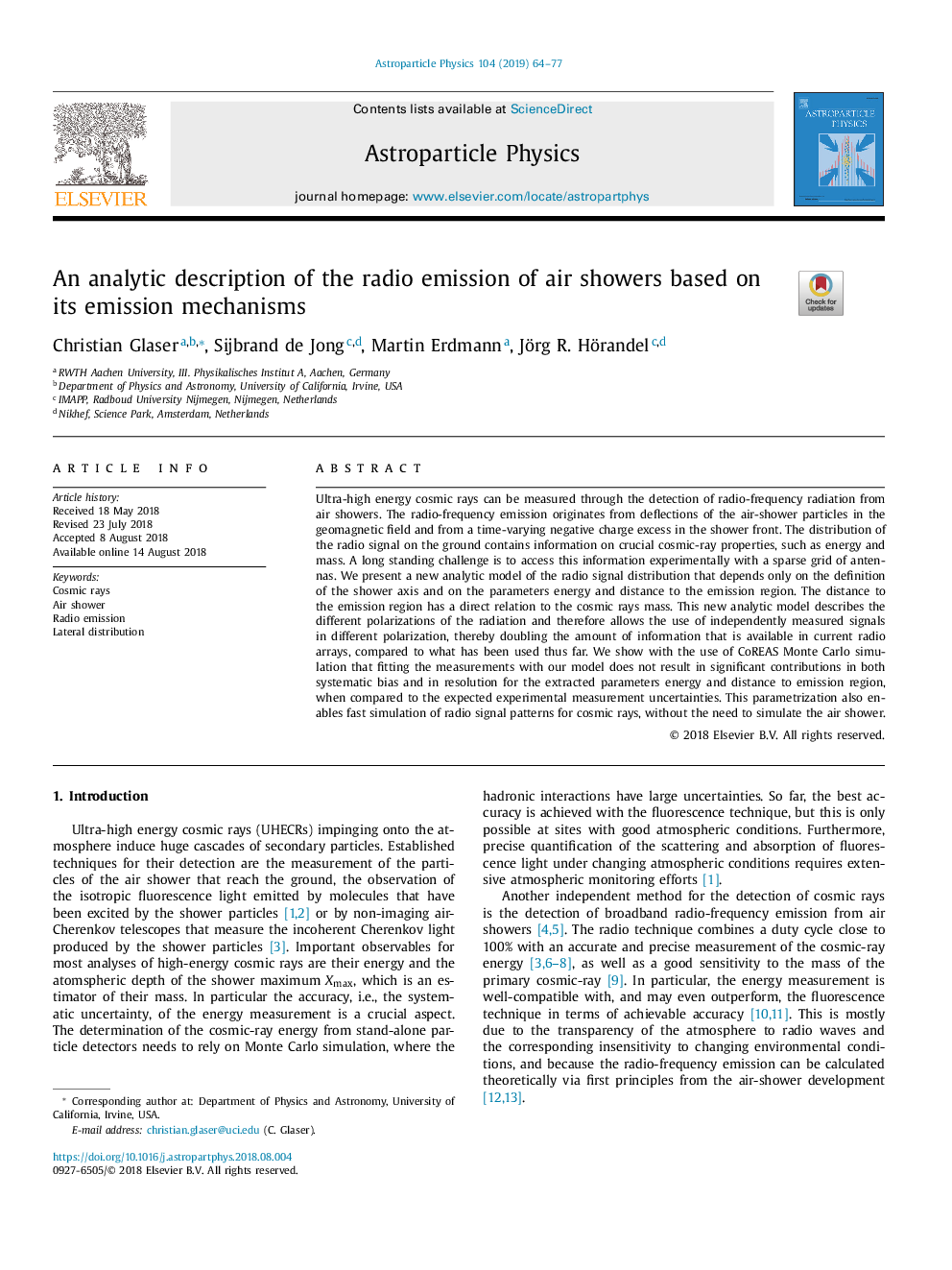| کد مقاله | کد نشریه | سال انتشار | مقاله انگلیسی | نسخه تمام متن |
|---|---|---|---|---|
| 10142725 | 1646108 | 2019 | 14 صفحه PDF | دانلود رایگان |
عنوان انگلیسی مقاله ISI
An analytic description of the radio emission of air showers based on its emission mechanisms
ترجمه فارسی عنوان
توصیف تحلیلی از انتشار رادیو هوای هوای بر اساس مکانیزم انتشار آن
دانلود مقاله + سفارش ترجمه
دانلود مقاله ISI انگلیسی
رایگان برای ایرانیان
کلمات کلیدی
اشعه های کیهانی، دوش هوا، انتشار رادیو، توزیع جانبی،
موضوعات مرتبط
مهندسی و علوم پایه
فیزیک و نجوم
نجوم و فیزیک نجومی
چکیده انگلیسی
Ultra-high energy cosmic rays can be measured through the detection of radio-frequency radiation from air showers. The radio-frequency emission originates from deflections of the air-shower particles in the geomagnetic field and from a time-varying negative charge excess in the shower front. The distribution of the radio signal on the ground contains information on crucial cosmic-ray properties, such as energy and mass. A long standing challenge is to access this information experimentally with a sparse grid of antennas. We present a new analytic model of the radio signal distribution that depends only on the definition of the shower axis and on the parameters energy and distance to the emission region. The distance to the emission region has a direct relation to the cosmic rays mass. This new analytic model describes the different polarizations of the radiation and therefore allows the use of independently measured signals in different polarization, thereby doubling the amount of information that is available in current radio arrays, compared to what has been used thus far. We show with the use of CoREAS Monte Carlo simulation that fitting the measurements with our model does not result in significant contributions in both systematic bias and in resolution for the extracted parameters energy and distance to emission region, when compared to the expected experimental measurement uncertainties. This parametrization also enables fast simulation of radio signal patterns for cosmic rays, without the need to simulate the air shower.
ناشر
Database: Elsevier - ScienceDirect (ساینس دایرکت)
Journal: Astroparticle Physics - Volume 104, January 2019, Pages 64-77
Journal: Astroparticle Physics - Volume 104, January 2019, Pages 64-77
نویسندگان
Christian Glaser, Sijbrand de Jong, Martin Erdmann, Jörg R. Hörandel,
